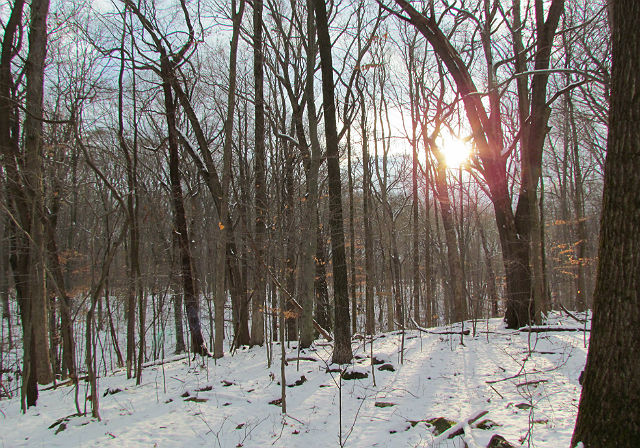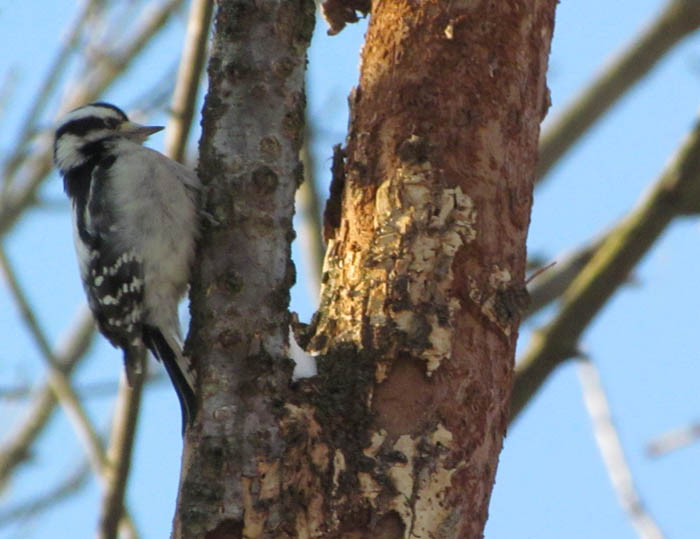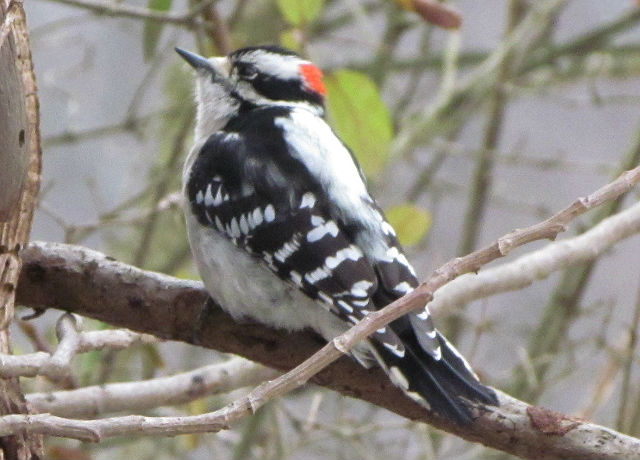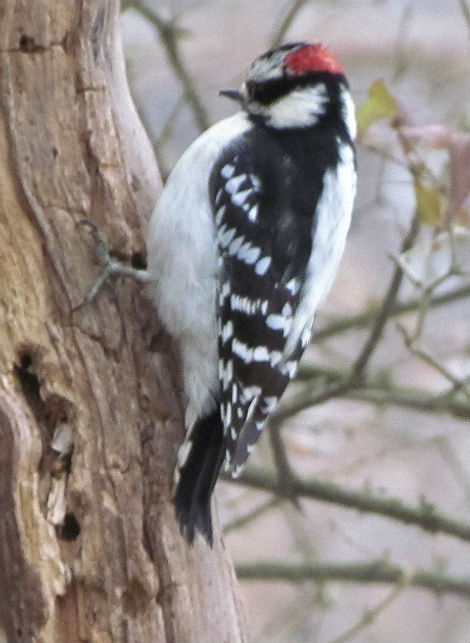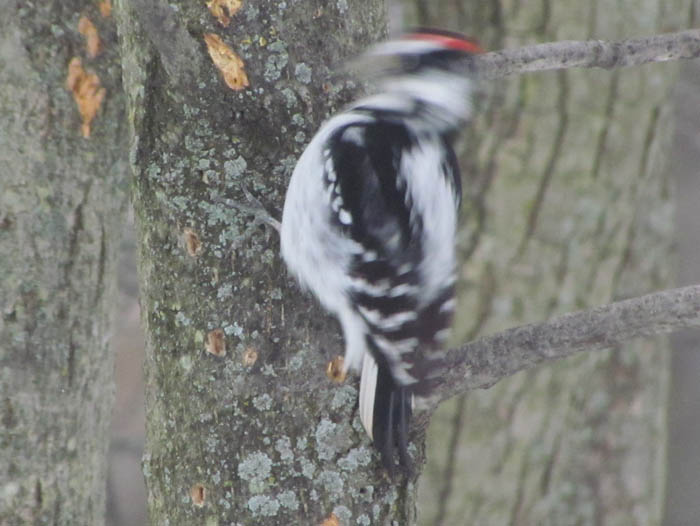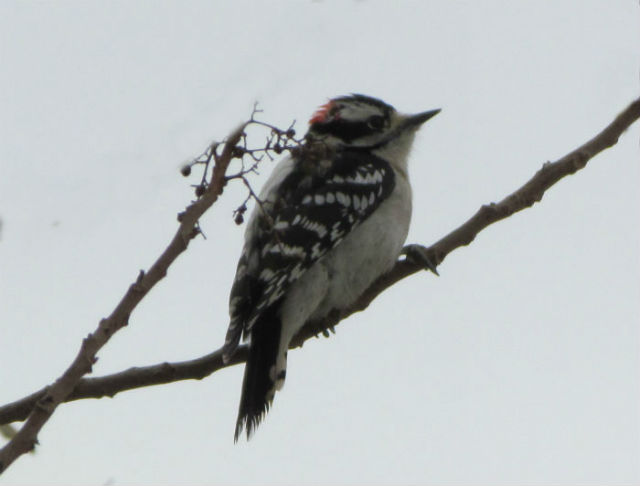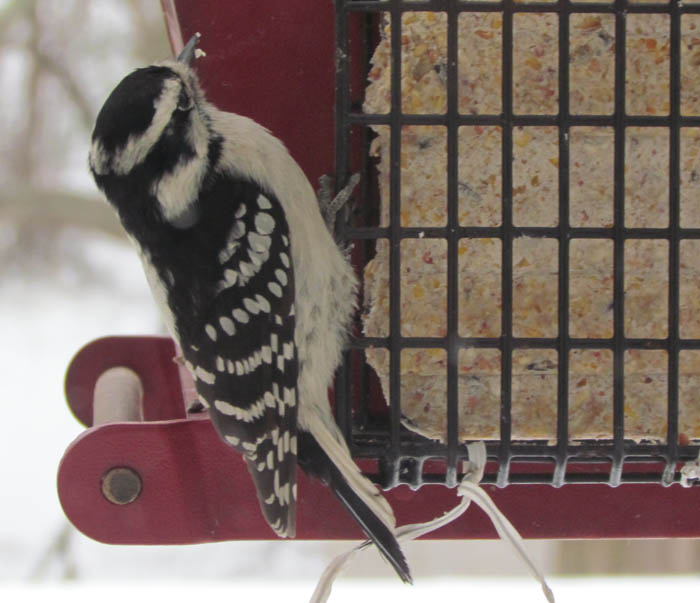Not only is this bird one of our most common and widespread woodpeckers, it also has adapted to a variety of habitats. It can be found in mature hardwood forests as well as in fencerows along fields. It also regularly visits bird feeders.
The Downy Woodpecker, our smallest woodpecker, is six inches long and has a small black bill. It has a white chest and back, black wings with white spots, a black tail and a black head with a white “mustache” and white “eyebrows.”
This bird always seems to be hard at work, constantly foraging for food or excavating holes in trees to be used as nests. Like other woodpeckers, it has several adaptations that allow it to hammer away relentlessly on trees. This includes a sturdy bill and strong neck muscles. Its brain is encased in a protective cavity in its reinforced skull.
Another characteristic this bird shares with other woodpeckers is nostrils surrounded by feathers. This helps to filter out the sawdust created by pecking away at wood. The male has a small red patch on the back of his head; the female lacks this marking.
Downy Woodpeckers use their bills to drill into trees and dig out insects like beetles, wasps, moths and their larvae. In the Winter they sometimes “join forces” and mix with other flocks of different species of birds while looking for food.
While hiking its pretty commonplace to observe this bird busily searching trees and shrubs in search of insect eggs, cocoons and hibernating insects and spiders. It also consumes nuts and seeds, like this one was doing on the Ohio Erie Canal Towpath. They can be quite acrobatic in their pursuit of a meal.
I usually don’t have to go far to see this lively creature which stays here year-round – sometimes all I have to do is look out the kitchen window.

